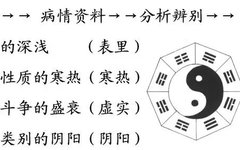Eight Principles of DiagnosisThe Eight Principles: Refers to the eight diagnostic principles of Exterior (Biao), Interior (Li), Cold (Han), Heat (Re), Deficiency (Xu), Excess (Shi), Yin, and Yang.The Eight Principles of Diagnosis: This method involves the physician analyzing various clinical data obtained through diagnostic methods using the Eight Principles to determine the depth of the disease location, the nature of the condition as either cold or heat, the strength of the pathogenic factors versus the body’s righteous qi, and the classification of the disease as either Yin or Yang, thus serving as a framework for diagnosis.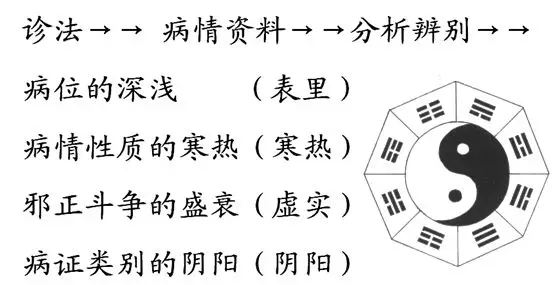 1. Exterior and Interior DiagnosisExterior and Interior are a pair of principles that summarize and differentiate the location of the disease as either superficial or deep. They can help assess the severity and depth of the condition and the pathological changes.Exterior and Interior diagnosis is applicable to externally contracted diseases, especially in the early stages of Febrile Diseases (Shanghan) and Warm Diseases (Wenbing). The main functions of this diagnosis are twofold: first, to differentiate severity, where exterior syndromes are superficial and mild, while interior syndromes are deep and severe; second, to determine progression or regression, where the invasion of exterior pathogens into the interior indicates disease progression, while the expulsion of interior pathogens to the exterior indicates recovery.(1) Exterior Syndrome Exterior syndrome refers to the superficial symptoms resulting from the invasion of external pathogenic factors such as the six excesses (liuyin), epidemics (yile), or insect toxins through the skin and mucous membranes, where the righteous qi (wei qi) fights against these pathogens. This is typically seen in the early stages of externally contracted diseases.Clinical Characteristics: Sudden onset, mild condition, superficial location, short duration, exposure to external pathogens. Clinical manifestations of exterior syndrome:Main manifestations: Chills (or aversion to wind), fever (or subjective feeling of heat), body aches, floating pulse.Characteristic manifestations: Nasal congestion, clear nasal discharge, or sneezing.Possible symptoms: Sore or itchy throat, slight cough.General manifestations: Pale red tongue, thin coating.(2) Interior SyndromeInterior syndrome refers to conditions where the disease is located internally, reflecting symptoms from the organs, qi, blood, or bone marrow affected by the disease. Any condition that does not fall under exterior syndrome or half-exterior half-interior syndrome is categorized as interior syndrome. It is often seen in chronic internal injuries or in the later stages of externally contracted diseases.Clinical Characteristics:Deep location, severe condition, prolonged duration.Clinical manifestations of interior syndrome:Not aversive to wind or cold, pulse is not floating, changes in tongue quality and coating, along with signs of organ dysfunction (see organ differentiation for details).(3) Half-Exterior Half-Interior SyndromeThis syndrome, referred to as Shaoyang Syndrome in the six meridian differentiation, indicates a condition where the external pathogenic factor is transitioning into the interior, leading to a struggle between the pathogenic and righteous qi, with the disease location fluctuating between exterior and interior.Characterized by alternating chills and fever, fullness in the chest and hypochondria, irritability, aversion to food, bitter taste in the mouth, dry throat, dizziness, and wiry pulse.(4) Differentiation of Exterior and Interior Syndromes
1. Exterior and Interior DiagnosisExterior and Interior are a pair of principles that summarize and differentiate the location of the disease as either superficial or deep. They can help assess the severity and depth of the condition and the pathological changes.Exterior and Interior diagnosis is applicable to externally contracted diseases, especially in the early stages of Febrile Diseases (Shanghan) and Warm Diseases (Wenbing). The main functions of this diagnosis are twofold: first, to differentiate severity, where exterior syndromes are superficial and mild, while interior syndromes are deep and severe; second, to determine progression or regression, where the invasion of exterior pathogens into the interior indicates disease progression, while the expulsion of interior pathogens to the exterior indicates recovery.(1) Exterior Syndrome Exterior syndrome refers to the superficial symptoms resulting from the invasion of external pathogenic factors such as the six excesses (liuyin), epidemics (yile), or insect toxins through the skin and mucous membranes, where the righteous qi (wei qi) fights against these pathogens. This is typically seen in the early stages of externally contracted diseases.Clinical Characteristics: Sudden onset, mild condition, superficial location, short duration, exposure to external pathogens. Clinical manifestations of exterior syndrome:Main manifestations: Chills (or aversion to wind), fever (or subjective feeling of heat), body aches, floating pulse.Characteristic manifestations: Nasal congestion, clear nasal discharge, or sneezing.Possible symptoms: Sore or itchy throat, slight cough.General manifestations: Pale red tongue, thin coating.(2) Interior SyndromeInterior syndrome refers to conditions where the disease is located internally, reflecting symptoms from the organs, qi, blood, or bone marrow affected by the disease. Any condition that does not fall under exterior syndrome or half-exterior half-interior syndrome is categorized as interior syndrome. It is often seen in chronic internal injuries or in the later stages of externally contracted diseases.Clinical Characteristics:Deep location, severe condition, prolonged duration.Clinical manifestations of interior syndrome:Not aversive to wind or cold, pulse is not floating, changes in tongue quality and coating, along with signs of organ dysfunction (see organ differentiation for details).(3) Half-Exterior Half-Interior SyndromeThis syndrome, referred to as Shaoyang Syndrome in the six meridian differentiation, indicates a condition where the external pathogenic factor is transitioning into the interior, leading to a struggle between the pathogenic and righteous qi, with the disease location fluctuating between exterior and interior.Characterized by alternating chills and fever, fullness in the chest and hypochondria, irritability, aversion to food, bitter taste in the mouth, dry throat, dizziness, and wiry pulse.(4) Differentiation of Exterior and Interior Syndromes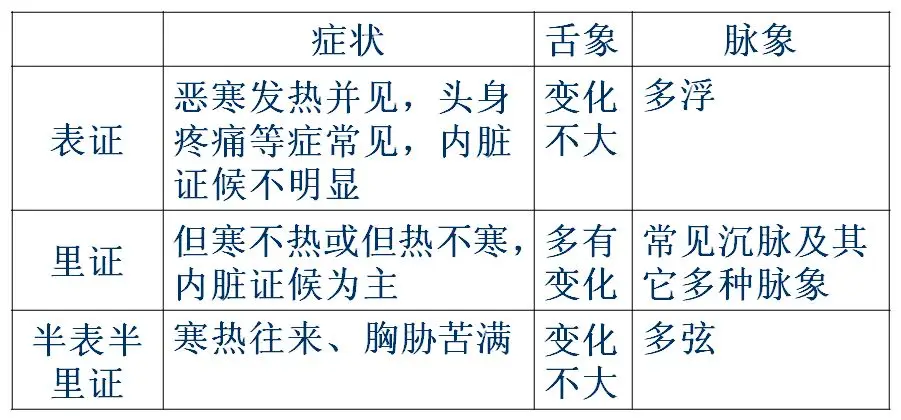 2. Cold and Heat DiagnosisCold and heat are a pair of principles that summarize and differentiate the nature of diseases. Cold and heat reflect the balance of Yin and Yang in the body.Excess:Excess Yang leads to heat… Excess Yang heat is termed Excess Heat (Shi Re); Excess Yin leads to cold… Excess Yin cold is termed Excess Cold (Shi Han).Deficiency:Deficient Yang leads to cold… Yang deficiency results in Deficient Cold (Xu Han); Deficient Yin leads to heat… Yin deficiency results in Deficient Heat (Xu Re).Cold syndrome refers to a set of symptoms and signs associated with cold, while heat syndrome refers to a set of symptoms and signs associated with heat.Yin and Yang Balance Diagram
2. Cold and Heat DiagnosisCold and heat are a pair of principles that summarize and differentiate the nature of diseases. Cold and heat reflect the balance of Yin and Yang in the body.Excess:Excess Yang leads to heat… Excess Yang heat is termed Excess Heat (Shi Re); Excess Yin leads to cold… Excess Yin cold is termed Excess Cold (Shi Han).Deficiency:Deficient Yang leads to cold… Yang deficiency results in Deficient Cold (Xu Han); Deficient Yin leads to heat… Yin deficiency results in Deficient Heat (Xu Re).Cold syndrome refers to a set of symptoms and signs associated with cold, while heat syndrome refers to a set of symptoms and signs associated with heat.Yin and Yang Balance Diagram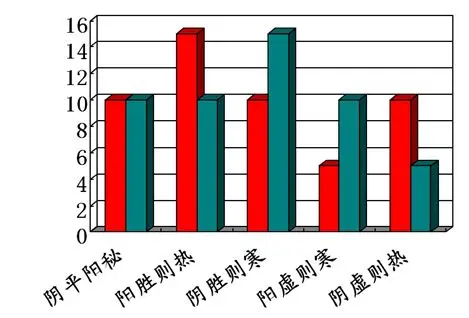 (1) Cold SyndromeCold syndrome is characterized by Yang deficiency or the invasion of cold pathogens, presenting a nature that is cold.1. Definition:Excess Yin ~ Excess Cold syndrome, Deficient Yang ~ Deficient Cold syndrome.2. Clinical manifestations:
(1) Cold SyndromeCold syndrome is characterized by Yang deficiency or the invasion of cold pathogens, presenting a nature that is cold.1. Definition:Excess Yin ~ Excess Cold syndrome, Deficient Yang ~ Deficient Cold syndrome.2. Clinical manifestations: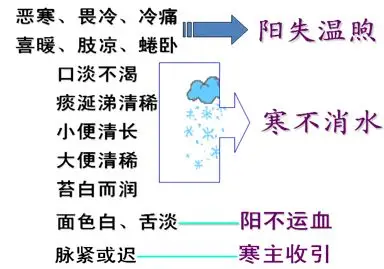 (2) Heat SyndromeHeat syndrome is characterized by Yin deficiency or the invasion of heat pathogens, presenting a nature that is hot.1. Definition:Excess Yang ~ Excess Heat syndrome, Deficient Yin ~ Deficient Heat syndrome.2. Clinical manifestations:
(2) Heat SyndromeHeat syndrome is characterized by Yin deficiency or the invasion of heat pathogens, presenting a nature that is hot.1. Definition:Excess Yang ~ Excess Heat syndrome, Deficient Yin ~ Deficient Heat syndrome.2. Clinical manifestations: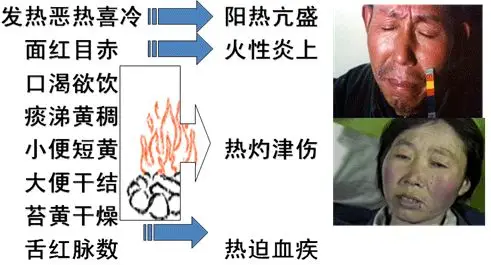 3. Key Points for Differentiating Cold and Heat Syndromes
3. Key Points for Differentiating Cold and Heat Syndromes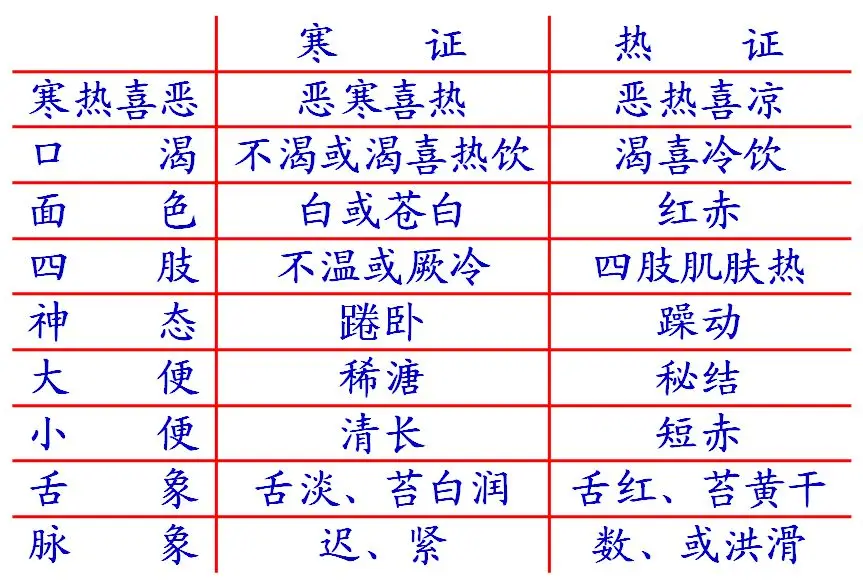 3. Deficiency and Excess DiagnosisDeficiency and excess are principles that summarize and differentiate the strength of the body’s righteous qi and the weakness of the pathogenic qi. According to the Suwen (Plain Questions) “Discussion on Deficiency and Excess”: “When the pathogenic qi is strong, it is excess; when the essence qi is depleted, it is deficiency.” (1) Deficiency SyndromeDeficiency syndrome refers to various weak symptoms resulting from the weakness or insufficiency of the body’s righteous qi. 1 、Definition: Righteous qi is weak (the main aspect of contradiction), pathogenic qi is not strong, and the struggle between the two is not intense.Righteous qi: Yin, Yang, qi, blood, essence, and body fluids.Degree of deficiency: Insufficient — Depleted — Weak — Declined — Exhausted. 2 、Causes (1) Congenital insufficiency (2) Acquired imbalance and disease consumption Characteristics:Long course, slow progression, constitution is generally weak. Yang Deficiency: Yang deficiency refers to a type of syndrome characterized by insufficient Yang qi (qi deficiency + cold signs). Symptoms include fatigue, pale complexion, spontaneous sweating, reluctance to speak, aversion to cold, cold limbs, clear and frequent urination, loose stools, pale and enlarged tongue with tooth marks, and weak or slow pulse. Yin Deficiency:Yin deficiency refers to a type of syndrome characterized by insufficient Yin fluids (blood deficiency + heat signs). Symptoms include weight loss, dizziness, insomnia, flushed cheeks, five-center heat, dry mouth and throat, tidal fever, night sweats, red tongue with little coating, and thin rapid pulse.Key Points for Differentiating Yin and Yang Deficiency
3. Deficiency and Excess DiagnosisDeficiency and excess are principles that summarize and differentiate the strength of the body’s righteous qi and the weakness of the pathogenic qi. According to the Suwen (Plain Questions) “Discussion on Deficiency and Excess”: “When the pathogenic qi is strong, it is excess; when the essence qi is depleted, it is deficiency.” (1) Deficiency SyndromeDeficiency syndrome refers to various weak symptoms resulting from the weakness or insufficiency of the body’s righteous qi. 1 、Definition: Righteous qi is weak (the main aspect of contradiction), pathogenic qi is not strong, and the struggle between the two is not intense.Righteous qi: Yin, Yang, qi, blood, essence, and body fluids.Degree of deficiency: Insufficient — Depleted — Weak — Declined — Exhausted. 2 、Causes (1) Congenital insufficiency (2) Acquired imbalance and disease consumption Characteristics:Long course, slow progression, constitution is generally weak. Yang Deficiency: Yang deficiency refers to a type of syndrome characterized by insufficient Yang qi (qi deficiency + cold signs). Symptoms include fatigue, pale complexion, spontaneous sweating, reluctance to speak, aversion to cold, cold limbs, clear and frequent urination, loose stools, pale and enlarged tongue with tooth marks, and weak or slow pulse. Yin Deficiency:Yin deficiency refers to a type of syndrome characterized by insufficient Yin fluids (blood deficiency + heat signs). Symptoms include weight loss, dizziness, insomnia, flushed cheeks, five-center heat, dry mouth and throat, tidal fever, night sweats, red tongue with little coating, and thin rapid pulse.Key Points for Differentiating Yin and Yang Deficiency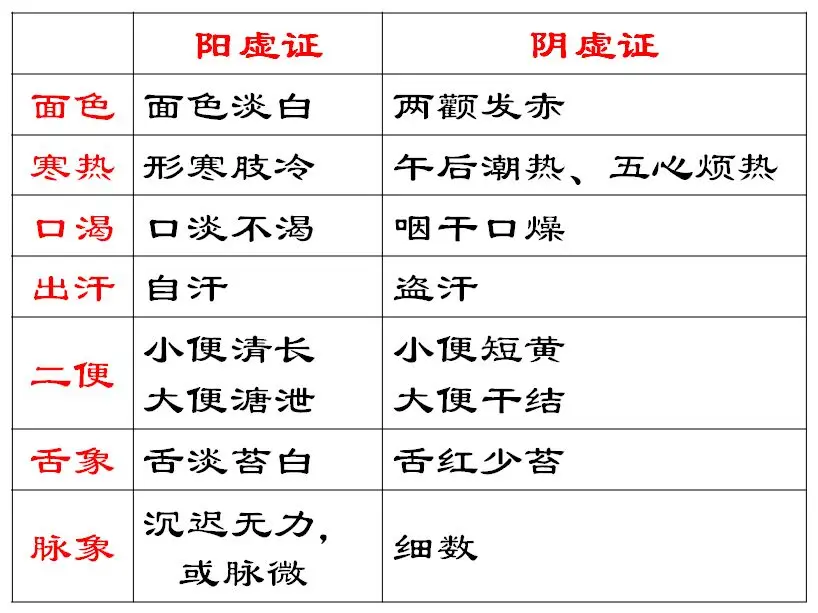 (2) Excess Syndrome Excess syndrome refers to various clinical symptoms resulting from the invasion of external pathogens or the imbalance of Yin and Yang qi and blood during the disease process, characterized by Yang, heat, stagnation, or obstruction, or the accumulation of pathological products within the body. 1 、Definition (1) Pathogenic qi is excessive (surplus), righteous qi is not deficient, and the struggle between the two is intense. (2) Pathological products are stagnant. 2 、Causes (1) Invasion of external pathogens (2) Dysfunction of internal organs, accumulation of phlegm, dampness, blood stasis, pus, food retention, or parasites.Characteristics: Sudden onset, acute disease, severe condition, strong constitution.Due to the nature of the pathogenic factors, pathological products, and disease location, clinical manifestations are diverse. Symptoms include high fever, abdominal distension and pain with tenderness, chest tightness and irritability, and in severe cases, confusion and delirium, coarse breathing, excessive phlegm, constipation, and difficulty urinating, with a pale tongue and thick greasy coating, and a strong pulse.Key Points for Differentiating Deficiency and Excess Syndromes
(2) Excess Syndrome Excess syndrome refers to various clinical symptoms resulting from the invasion of external pathogens or the imbalance of Yin and Yang qi and blood during the disease process, characterized by Yang, heat, stagnation, or obstruction, or the accumulation of pathological products within the body. 1 、Definition (1) Pathogenic qi is excessive (surplus), righteous qi is not deficient, and the struggle between the two is intense. (2) Pathological products are stagnant. 2 、Causes (1) Invasion of external pathogens (2) Dysfunction of internal organs, accumulation of phlegm, dampness, blood stasis, pus, food retention, or parasites.Characteristics: Sudden onset, acute disease, severe condition, strong constitution.Due to the nature of the pathogenic factors, pathological products, and disease location, clinical manifestations are diverse. Symptoms include high fever, abdominal distension and pain with tenderness, chest tightness and irritability, and in severe cases, confusion and delirium, coarse breathing, excessive phlegm, constipation, and difficulty urinating, with a pale tongue and thick greasy coating, and a strong pulse.Key Points for Differentiating Deficiency and Excess Syndromes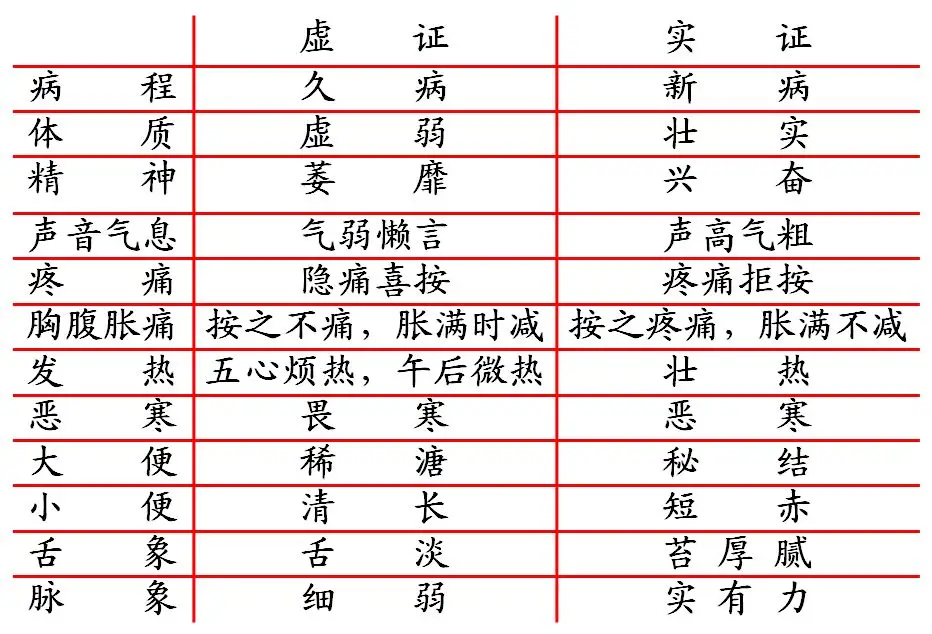 4. Yin and Yang DiagnosisYin and Yang are principles that summarize and differentiate the categories of diseases, serving as the overarching framework for the Eight Principles of Diagnosis.
4. Yin and Yang DiagnosisYin and Yang are principles that summarize and differentiate the categories of diseases, serving as the overarching framework for the Eight Principles of Diagnosis.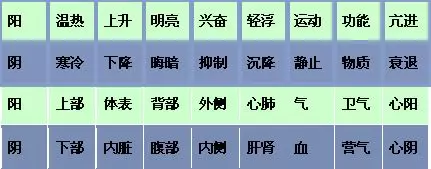 Significance of Yin and Yang Diagnosis 1. The overarching framework of Yin and Yang in the Eight Principles can encompass the other six aspects (two principles and six essentials). 2. Any disease and syndrome can be fundamentally summarized from the perspective of Yin and Yang.Clinical manifestations of Yin and Yang Syndromes: 1. Yin Syndrome: A combination of interior syndrome, cold syndrome, and deficiency syndrome. 2. Yang Syndrome: A combination of exterior syndrome, heat syndrome, and excess syndrome.Key Points for Differentiating Yin and Yang Syndromes
Significance of Yin and Yang Diagnosis 1. The overarching framework of Yin and Yang in the Eight Principles can encompass the other six aspects (two principles and six essentials). 2. Any disease and syndrome can be fundamentally summarized from the perspective of Yin and Yang.Clinical manifestations of Yin and Yang Syndromes: 1. Yin Syndrome: A combination of interior syndrome, cold syndrome, and deficiency syndrome. 2. Yang Syndrome: A combination of exterior syndrome, heat syndrome, and excess syndrome.Key Points for Differentiating Yin and Yang Syndromes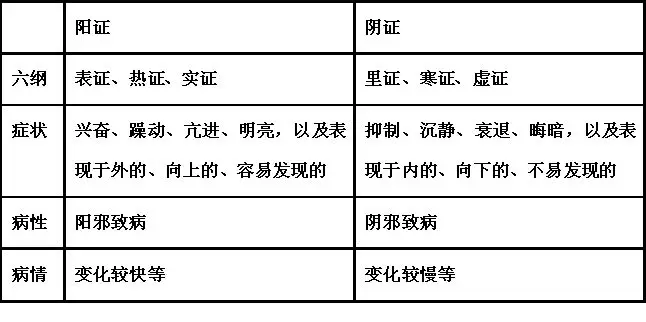 Specific Content of Yin and Yang DiagnosisKey Points for Differentiating Between Yang Deficiency and Yin Deficiency
Specific Content of Yin and Yang DiagnosisKey Points for Differentiating Between Yang Deficiency and Yin Deficiency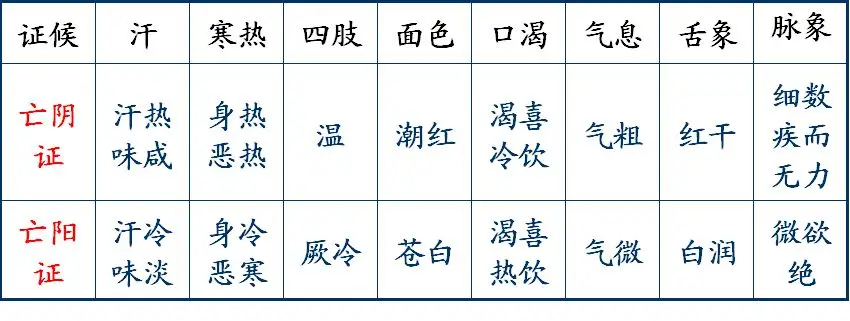 1. Yang Deficiency Syndrome: Refers to a critical condition where the Yang qi in the body is extremely weak, showing signs of impending collapse of Yang qi.Manifestations include profuse cold sweat, thin and pale sweat, lethargy, cold skin, cold hands and feet, weak breathing, pale complexion, pale and moist tongue, and a faint pulse.2. Yin Deficiency Syndrome: Refers to a critical condition characterized by significant loss of body fluids, severe deficiency of Yin fluids, and impending exhaustion.Manifestations include hot and sticky sweat, burning sensation in the body, irritability, aversion to heat, thirst, wrinkled skin, very little urination, red complexion, dry lips and tongue, and rapid pulse.
1. Yang Deficiency Syndrome: Refers to a critical condition where the Yang qi in the body is extremely weak, showing signs of impending collapse of Yang qi.Manifestations include profuse cold sweat, thin and pale sweat, lethargy, cold skin, cold hands and feet, weak breathing, pale complexion, pale and moist tongue, and a faint pulse.2. Yin Deficiency Syndrome: Refers to a critical condition characterized by significant loss of body fluids, severe deficiency of Yin fluids, and impending exhaustion.Manifestations include hot and sticky sweat, burning sensation in the body, irritability, aversion to heat, thirst, wrinkled skin, very little urination, red complexion, dry lips and tongue, and rapid pulse.
Copyright Notice: The article is sourced from the internet. We share articles and images from the internet, and the copyright belongs to the original authors and sources. The various prescriptions and formulas mentioned are for reference and learning purposes only and should not be used as a basis for medical diagnosis. Please do not use them blindly, and this platform does not bear any responsibility for any consequences arising from this!

